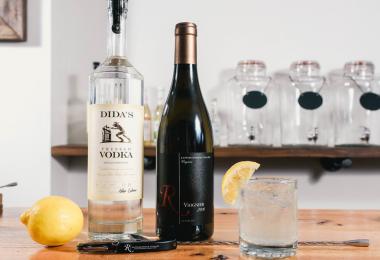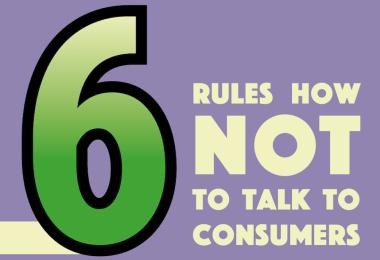Wine tourism is big business in the US. In September 2017, WineAmerica, the National Association of American Wineries, released an economic impact study that estimated 43m tourists visit US wineries each year, generating $17.6bn in revenue for local communities. For the communities and the wineries themselves, tourists and their wallets come with challenges: across the US, wineries and local governments are working to creatively channel the flow of visitors to make it as manageable as possible for everybody.
California overflow
In Napa Valley, the flow of visitors is channelled in a literal sense into a pair of two-lane, north-south roads, Highway 29 and the Silverado Trail. The resulting bumper-to-bumper traffic can make city dwellers feel like they never left home. The tourist traffic collides with regular commuters; a growing housing shortage in the valley means workers are travelling further and further on the same roads as guests. Until a middle turning lane was added to Highway 29 several years ago, some wineries there were restricted from accepting visitors after 3pm to limit left turns holding up rush-hour traffic. The town of Calistoga has begun offering a shuttle service for workers, and a plan has been floated to adapt the Wine Train, until now purely a luxury ride through the valley for tourists, to allow for mundane public transport of the area’s many workers.
Traffic can be even more of an issue in regions where wineries live side by side with residents not involved in the industry. With great forethought, much of Napa Valley was declared an agricultural preserve, where uses incompatible with agriculture are restricted, as far back as 1968, when the area’s population was sparse and rural.
Newcomers since then know what they’re in for before they arrive. In areas such as Santa Barbara County, the wine industry grew up at the same time as the area became a popular spot for high-end residential areas and second homes, giving the region the nickname the American Riviera. Wine tourism in Santa Barbara took off 15 years ago in the wake of the movie Sideways, which is set there; residents aren’t necessarily thrilled with the extra attention. “Locals that are not involved in the wine industry are concerned about crowds and traffic associated with wine tourism,” says Alison Laslett, CEO of Santa Barbara Vintners. “We have made a concerted effort to focus our marketing on the high-end buyer as opposed to the bachelorette or group market in order to help mitigate this concern.”
Managing traffic at the individual winery level is also an issue. In the North Fork region of New York’s Long Island, wineries such as Paumanok enjoy a steady stream of visitors. “We have Long Islanders and New Yorkers, who really are our best customers,” says Kareem Massoud, winemaker at Paumanok Vineyards, “but being so close to New York City, we get a fair few international visitors, too.” Wine tourism, according to Massoud, has grown dramatically in the past decade. While overall that’s a huge positive, he says managing large buses and groups is a challenge. Some of that is being addressed at a community level, but Paumanok also had to make its own decisions on how to handle groups. Today, it requires groups of seven or more to reserve in advance, agree to a $25 minimum spend per person, and come earlier in the day, before 1pm.
Massoud says the change has improved service by easing congestion at peak times, and he also admits it cuts down on the large groups of excessively festive, inebriated tourists. “It’s been highly effective in addressing, for example, those large groups in a limo that show up unannounced around 5pm after visiting four or five other wineries, who come in, create a scene, and generally end up being very disruptive.” However, he admits that at least one winery nearby has made a name for itself by catering to rowdier groups, leading to a rambunctious scene by the end of the day.
Loud noise
On the South Fork of Long Island, where there are fewer wineries, Wölffer Estate has butted heads with locals over evening activities and live music events. A decade or so ago, the winery began expanding offerings at its farm stand, once a simple roadside stop across the street from the winery itself. The stand, like the winery and vineyards themselves, falls under the oversight of the New York State Department of Agriculture and Markets, which protects these sorts of activities because they enable wineries to diversify their income streams. These laws supersede local zoning regulations which seek to control noise and traffic for residents’ sakes. In an effort to be a good neighbour, Wölffer has sought to discourage problematic guests by forbidding buses and bachelorette parties. It also had the city change parking regulations on the street and hired security and a professional car parking company to manage traffic.
Drunk driving would seem to be a problem in wine tourism areas, but in at least some cases the data suggests tourists are not to blame. Compared to cities of similar size, the city of Napa ranked second in California for driving under the influence (DUI) arrests in 2015. However, data suggests the majority of those charged were locals, not tourists. Similarly, in Sonoma, the Santa Rosa Press Democrat newspaper reported in 2018 that people arrested for DUI were five times more likely to be coming from home than from a winery or brewery. The implication is that wine tourists prepare for their drinking experience, either by appointing a designated driver or hiring someone, which Uber and related services have made increasingly easy.
Spreading the load
In areas where wineries are more scattered or not able to have a tasting room on site, either for legal or space reasons, independent tasting rooms have been popular. More recently, wineries in some areas have been opening additional tasting rooms to provide another outlet for direct-to-consumer sales that don’t have to navigate the US distribution system. Washington’s Walla Walla has more than 30 tasting rooms downtown; visitors may not get a firsthand view of the vineyards, but they do get to taste many wines in a convenient setting, without needing to drive. The Lompoc Wine Ghetto, in Santa Barbara, offers the chance to visit 20 wineries which are producing on site and open to visitors several days each week.
Since a concentrated area of tasting rooms lets tourists visit multiple wineries in one location, it can help control traffic, but it can put pressure on other parts of the community. The town of Sonoma has seen a huge growth in tasting rooms concentrated around the town’s historical plaza. The number of tasting rooms has almost doubled since 2012, when there were only 17. The influx has driven up rents and in response to locals’ concerns, the city put a moratorium on further openings in 2017. That moratorium has been extended until May 2019 while city officials review relevant issues, to the frustration of many.
Aside from coping with the sheer volume of tourists and managing community relations, wineries and wine regions are thinking hard about what kind of activities reinforce a region’s credibility and reputation for quality wine. A 2013 report from Portland State University in Oregon showed that tourist attractions which don’t support that message can do long-term damage to a brand or region’s reputation.
“It’s pretty clear that the degree to which activities in wine regions diverge from a quality message or the distinctiveness associated with the brand potentially creates a conflict [with a region’s reputation for wine quality]”, says project lead Professor Ethan Seltzer. “On the other hand, I think the reason these issues arise has to do with the fact that, especially in places like Oregon, wineries are small businesses, trying to cobble together a range of ways to finance their operations.” Whether it’s weddings, merchandise, or other activities, if it’s not directly related to making and selling wine there can be a tipping point where it detracts from a region’s reputation.
Depending on the region, different organisations are taking responsibility for maintaining that reputation. In New York, state laws may offer wineries a lot of tools to develop profit streams, but they don’t necessarily evaluate whether those streams contribute to a quality wine message. Seltzer argues that regional wine groups like the Willamette Valley Wineries Association, and similar organisations elsewhere, are best suited to addressing the issue. “They play a really pivotal role in establishing and protecting the nature of the brand associated with the quality of the wine.”
Much of that work means ensuring that even as tourism facilities develop in and around wine regions, they don’t create pressure on the agricultural work that is core to making wine in the first place. Professor Seltzer points to work done in Oregon in the 1970s, just as the Willamette Valley was becoming known for its wines; Napa Valley’s agriculture preserve status would be another, forward-thinking example. Nonetheless, the producers themselves have to come together to agree on a quality-focused message. “Regulation is good for managing the scale and intensity of activity at wineries from the standpoint of construction and the development of facilities,” says Seltzer. “You can prevent some real harm with regulation. But if you really want to actually sustain the identity and authenticity of a place, you actually have to work collaboratively with the other people involved in the same business.”








